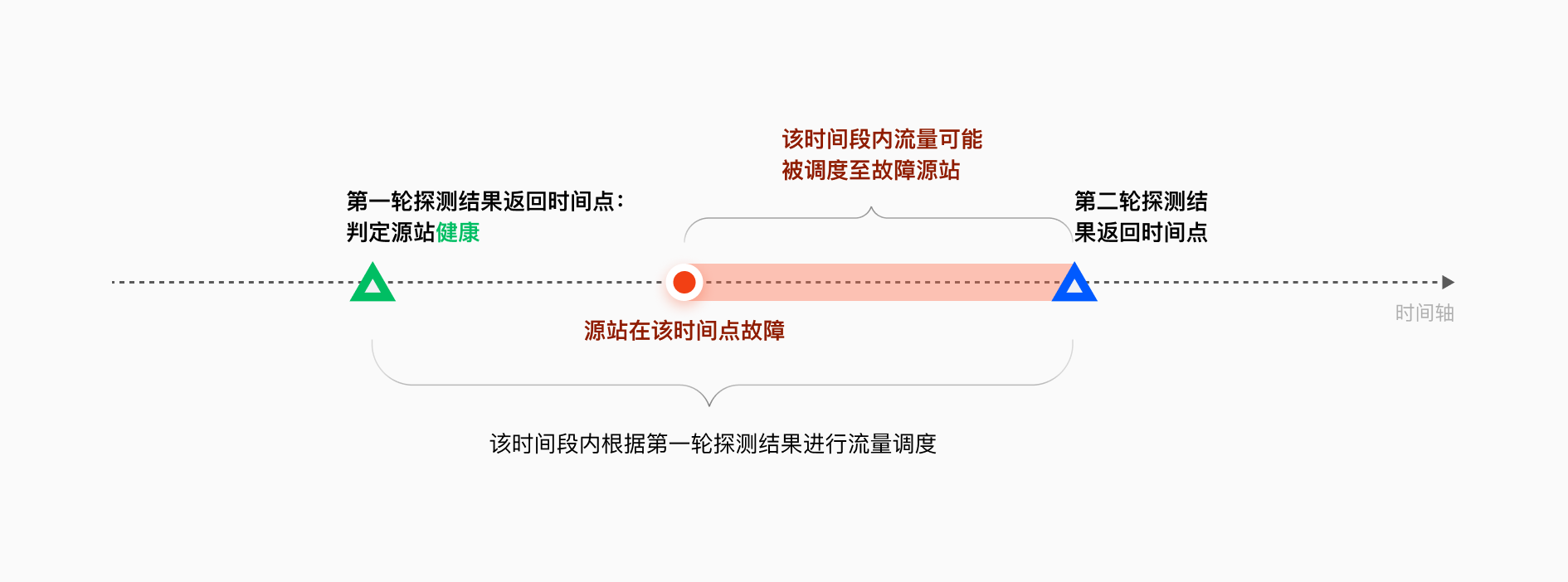请求重试策略介绍
负载均衡可以在业务正常请求至某个源站出现请求失败时,根据请求重试策略将该请求调度至其它源站再次重试,以减少因网络问题、源站故障等原因导致的业务请求失败。
注意:
实际业务请求可能会因为以下情况出现业务请求失败:
1. 源站故障后还未被主动探测屏蔽:配置了健康检查策略后,主动探测是周期性进行的,在新一轮探测结果返回之前,会根据上一轮探测结果进行流量分配。如果源站在两轮探测结果之间从健康变成了不健康,此时业务流量就可能仍然被调度至不健康源站,从而导致业务请求失败。

2. 网络抖动:源站本身健康,但是访问链路中出现网络问题导致业务请求失败。
说明:
请求失败包括回源建连失败和回源接收失败。
针对以上情况,EdgeOne 为您提供以下两种兜底的请求重试策略:
策略一:当真实业务请求访问某个源站失败时,直接重试到下一优先级源站组中的源站。适用于高优先级源站组和低优先级源站组性能相近的场景。
策略二:当真实业务请求访问某个源站失败时,直接重试到当前优先级源站组中的其他源站。适用于高优先级源站组性能远大于低优先级源站组的场景。
说明:
POST 请求不支持回源重试。